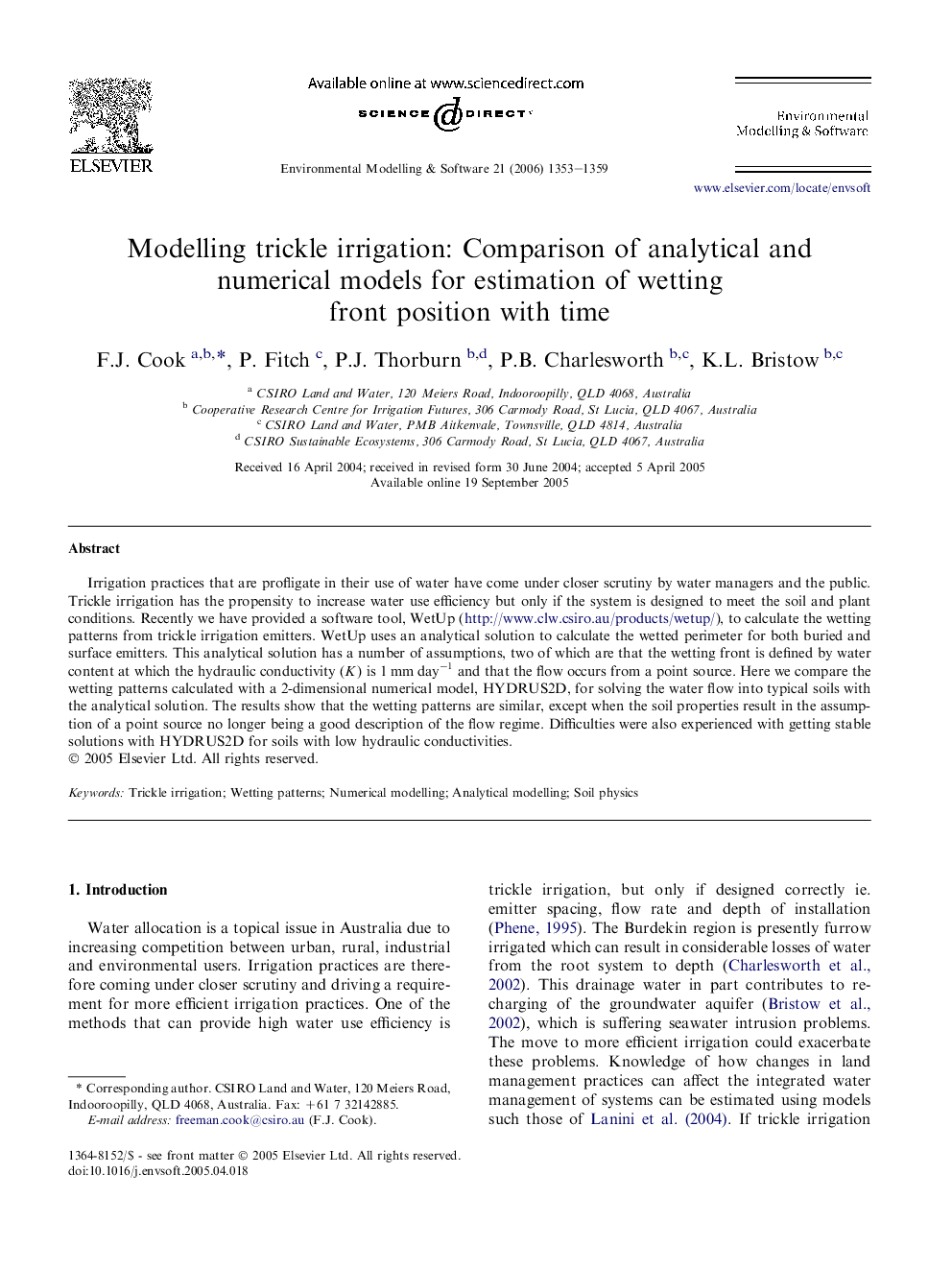| Article ID | Journal | Published Year | Pages | File Type |
|---|---|---|---|---|
| 569212 | Environmental Modelling & Software | 2006 | 7 Pages |
Irrigation practices that are profligate in their use of water have come under closer scrutiny by water managers and the public. Trickle irrigation has the propensity to increase water use efficiency but only if the system is designed to meet the soil and plant conditions. Recently we have provided a software tool, WetUp (http://www.clw.csiro.au/products/wetup/), to calculate the wetting patterns from trickle irrigation emitters. WetUp uses an analytical solution to calculate the wetted perimeter for both buried and surface emitters. This analytical solution has a number of assumptions, two of which are that the wetting front is defined by water content at which the hydraulic conductivity (K) is 1 mm day−1 and that the flow occurs from a point source. Here we compare the wetting patterns calculated with a 2-dimensional numerical model, HYDRUS2D, for solving the water flow into typical soils with the analytical solution. The results show that the wetting patterns are similar, except when the soil properties result in the assumption of a point source no longer being a good description of the flow regime. Difficulties were also experienced with getting stable solutions with HYDRUS2D for soils with low hydraulic conductivities.
